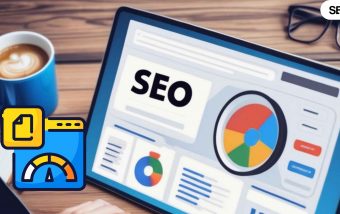How To Know If Someone Blocked You On iMessage? 5 Secret Hacks!
Apr 16, 2025

Apr 16, 2025

Apr 16, 2025

Apr 15, 2025

Apr 11, 2025

Apr 11, 2025

Apr 11, 2025

Apr 08, 2025

Mar 29, 2025
Sorry, but nothing matched your search "". Please try again with some different keywords.


Starting an e-commerce business with zero capital is simply impossible, but it is achievable by proper strategies. Many entrepreneurs have started and successfully managed a successful e-commerce business without a single penny as a startup investment.
This article will explore how to start an e-commerce business without money from scratch with zero capital using free tools, platforms, and creative strategies that work well in the online marketplace.

The Zero-Capital Model is beginning a business with nearly no capital input. For e-commerce, it uses free or low-cost platforms, services, and tools to build and run your store. It does not employ money but uses your skills, time, and other resources available to capitalize on your business.
Instead of spending on inventory or advertising, leverage what is already available: free software, organic marketing, and leverage from partnerships or collaboration.

Some businesses start with no capital or very little capital and become incredibly successful e-commerce businesses. For example:
Drop Shipping Businesses Several entrepreneurs launch their drop shipping businesses with nothing or negative capital.
A drop ship model is a way of making sales where you sell a product to a customer right from suppliers without purchasing your inventory ahead of time.
A great drop shipper begins by creating an online store and marketing products through Shopify or WooCommerce, relying on social media and word of mouth for traffic.
The examples illustrate that with the right mindset, a venture can be both initiated and scaled using very limited capital.

The first step in starting an e-commerce business with no capital is identifying a niche. The niche dictates your product type and generally guides your marketing strategies.
A defined niche allows you to target a specific set of customers, which often limits broad advertising campaigns.
To identify a niche, ask yourself the following questions: What are you passionate about or knowledgeable about?
After deciding on your niche, you will select a product or product that fits your chosen niche.
For instance, rather than selling regular T-shirts, you would specialize in a theme or style that will appeal to a certain market, like sustainable shirts for the conscious environmentalist.

Start with zero dollars by using free e-commerce platforms. There are quite a few of them where you can open an online store free of charge:
There is more variation in each site’s features, but all of them let you set up an online store without paying upfront. Choose the right one depending on your niche, technical level, and the number of items in your product catalog.

Among other things, social media provides free marketing to the world in a way that has never been done before.
With sites like Instagram, Facebook, TikTok, Pinterest, and Twitter, you can connect to your target market, introduce your products, and foster a community about your brand. Here is how you can use social media for your e-commerce business.

Networking and collaboration are essential in a no-money startup model. Consider the following strategies to build relationships that can help your business grow:

Running an e-commerce business without cost is quite creative in everyday operations. Here are key aspects of management:

Starting an e-commerce business with no capital has its challenges, but they are not insurmountable. Learn more about hurdles that you might face when getting involved in a startup business, especially if you are not investing financially.
One can surely know how to start an e-commerce business without money, but there has to be strategy and resourcefulness about it.
A niche is identified, free platforms used, social media and other creative marketing strategies applied to the zero-capital business start with minimal investment to be a huge success.
This increases chances to become an e-commerce player who values being there by providing value, building relations, and using free sources to get over problems to stay in the game of competitive e-commerce space.
You May Like To Read:
Nabamita Sinha loves to write about lifestyle and pop-culture. In her free time, she loves to watch movies and TV series and experiment with food. Her favorite niche topics are fashion, lifestyle, travel, and gossip content. Her style of writing is creative and quirky.
View all Posts
How To Know If Someone Blocked You On iMessag...
Apr 16, 2025
7 Website Design Mistakes That Are Hurting Yo...
Apr 16, 2025
Programmable Dynamic SEO for Location-Based P...
Apr 15, 2025
Google Boba Game: How To Play This Fun Game B...
Apr 11, 2025
Which Is The Best Video Search Engine Of 2025...
Apr 11, 2025

